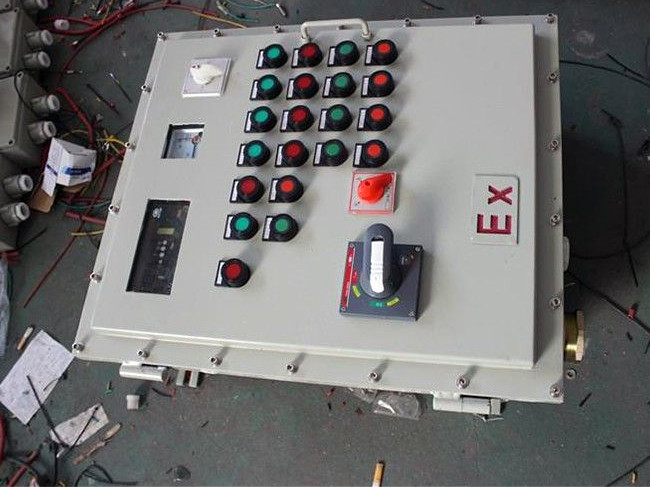Explosion-proof electrical equipment encompasses a variety of types including flameproof, increased safety, intrinsically safe, pressurized, oil-filled, sand-filled, spark-proof, encapsulated, and hermetically sealed devices.

Types of Explosion-Proof Electrical Equipment
These devices are broadly categorized into Classes I, II, and III, depending on their application environments. Class I is designated for equipment in coal mine gas conditions, Class II for environments with gas explosion hazards, and Class III for spaces with dust and fiber explosion risks.
Type 1 explosion-proof equipment is subdivided into six classifications: T1 to T6. Class II flameproof and intrinsically safe equipment are further segmented into three levels: IIA, IIB, and IIC.
Flameproof Equipment
This type of equipment can endure internal explosive mixtures’ explosions, preventing such internal events from triggering external explosions. Increased safety devices are engineered to operate without generating sparks, arcs, or excessive heat under normal conditions and are reinforced for heightened safety.
Increased Safety Equipment
These devices, which don’t produce sparks, arcs, or high temperatures under standard conditions, have additional safety measures to elevate their safety profile.
Intrinsically Safe Equipment
These are electrical devices that cannot ignite explosive mixtures by sparks or thermal effects under both normal and fault states. They are categorized into safety levels ia and ib, with the former being incapable of igniting explosive mixtures during regular operations, and the latter also maintaining this safety under normal conditions.
Pressurized Equipment
Pressurized devices use clean air, inert gases, or a continuous flow of clean air to prevent explosive mixtures from entering their enclosures. They have three types of pressurization structures: ventilated, pressurized, and sealed, with a mandatory enclosure protection level not below IP44.
Oil-Filled Equipment
In these devices, live parts likely to generate sparks, arcs, or dangerous temperatures are immersed in oil to prevent contact with explosive mixtures. Oil-filled mechanisms and DC switchgear are not feasible for such designs. Sand-filled devices contain fine granular materials to ensure internal arcs, flames, or temperatures don’t ignite external explosive mixtures.
Spark-Proof Equipment
These are designed to prevent dangerous temperatures and resist impacts, mechanical sparks, cable incidents, and protect the enclosure. Their aim is to increase safety by avoiding sparks, arcs, or hazardous temperatures. Under normal conditions, they don’t ignite adjacent explosive mixtures and are typically free from ignition-risk faults.
Encapsulated Equipment
These devices encase components that could ignite mixtures, such as arcs, sparks, and high temperatures, in sealants, preventing the ignition of surrounding explosive mixtures.
Hermetically Sealed Equipment
Constructed using methods like melting or bonding, these devices prevent external gases from infiltrating the sealed area.
It’s noteworthy that some explosion-proof electrical equipment, while primarily explosion-proof, may also incorporate components of other explosion-proof types.
 Shenhai Explosion-Proof
Shenhai Explosion-Proof
